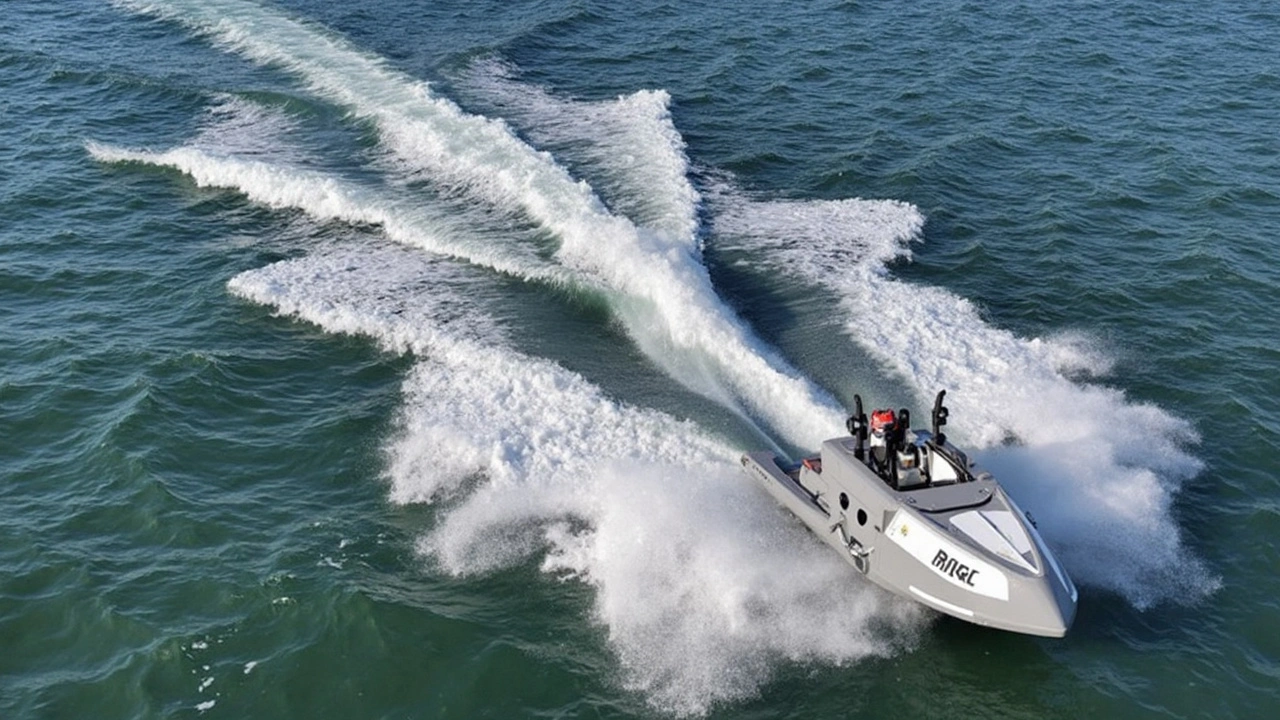- Autopsy Inconclusive for Nigerian Singer Mohbad: Unanswered Questions Linger May 17, 2024
- Brentford vs Arsenal: Broadcast Options, Match Details, and Key Insights Jan 1, 2025
- Copa America 2024: How to Watch Uruguay vs. Panama Live Stream for Free Jun 24, 2024
- Harry Potter Fans Left Disheartened as King's Cross Back to Hogwarts Countdown Fizzles Out Sep 3, 2024
- How Macron's Election Gambit Backfired, Shaking His Legacy in France and Europe Jul 10, 2024
Drone Boat (USV) Guide: What They Are and How to Use One
Drone boats—also called unmanned surface vehicles (USVs)—are small vessels that operate without a person on board. They come in sizes from kayak-like drones up to large craft used for research. If you want to monitor water, inspect a hull, or map a lake, a drone boat can cut time and risk. This guide explains real uses, how to pick one, basic safety, and simple upkeep.
Where drone boats help most
Surveying and mapping: USVs carry sonar and cameras to map lake beds, ports, and river channels faster than manual surveys. They give accurate depth readings and high-res images while keeping people out of danger.
Environmental monitoring: Use drone boats to test water quality, track algal blooms, and monitor wetlands. They can run repeated routes at fixed intervals, giving consistent data for researchers or local authorities.
Security and patrols: Ports and marinas use USVs for short patrols, perimeter checks, and to spot debris or intruders. A small drone boat can act like another set of eyes at night when resources are tight.
Search and rescue support: In rough conditions or fast-moving floods, a drone boat can reach areas unsafe for crews. They carry lights, throw bags, or relay live video to rescuers, helping locate people faster.
How to choose the right drone boat
Define the job first. Do you need long range, heavy payload, or high speed? A mapping mission prioritises stable platforms and battery life. A security craft needs speed and night vision.
Check payload capacity and sensors. If you plan to mount a depth sensor, water sampler, or thermal camera, confirm the USV can carry and power them. Most hobby models handle cameras but not heavy scientific gear.
Battery life and range matter. Coastal work often needs several hours and a few kilometres of range. For long surveys, look for swappable batteries or hybrid power systems.
Control and autonomy: Basic models use remote control; advanced ones follow GPS waypoints and can return home if the link drops. Autonomy reduces workload but costs more and may need more training.
Safety and rules: Always check local maritime rules. Many countries treat USVs like small vessels and require line-of-sight operation, lighting at night, and clear marking. Keep an emergency stop and a recovery plan—USVs can foul on weeds or suffer electronics failure.
Maintenance tips: Rinse with fresh water after use, especially in saltwater. Inspect propellers and seals, keep batteries cool, and update firmware regularly. Store sensors in dry boxes and charge batteries at safe rates.
Budgeting: Expect a small, ready-to-run drone boat for basic filming or hobby use. Professional-grade survey USVs cost more but pay off when they replace manned surveys or speed up inspections.
Want more specific recommendations or local rules for African waters? Tell me the region and task, and I’ll point you to models and legal guidance that fit your needs.
UK’s MARS Drone Boat Breaks Cover: The Fast-Tracked Revolution in Naval Warfare
- Katlego Sean Mahaye
- May 7, 2025
British firm SubSea Craft has unveiled the MARS USV—a highly adaptive, multi-mission drone boat built in just 100 days. Geared for naval warfare, it uses advanced sensors, supports UAV launches, and handles resupply missions autonomously, marking a leap in unmanned maritime defense.
